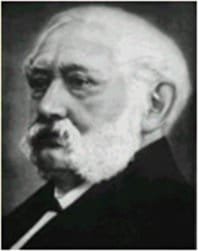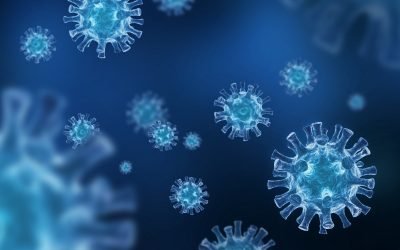
In the 19th century, a German medical doctor and homeopath named W.H. Schuessler (1821-1898) made a discovery, the importance of which has never been appreciated nor acknowledged by conventional medicine. Schuessler, by way of analyzing the ash of cremated human remains, discovered the prominent presence of twelve proportionately occurring mineral salts.
In chemistry, a mineral salt is an ionic compound (consisting of ions – electrically charged atoms or molecules) that is produced by a reaction between an acid and a base (an alkaline substance). Salts are composed of positively charged ions (i.e., cations) bonded with negative ions (i.e., anions), the product of which is an electrically neutral (without a net charge) compound. The salt we use to season our food (sodium chloride) is only one type of mineral salt, not the only one.
When living tissues are reduced to ash, all the organic (i.e., living) matter is consumed; all that remains are minerals (inorganic—not consisting of living matter) since they are combustible only at very high temperatures of between 4,000 and 10,000 degrees centigrade (approx. 7200 to 18,000 degrees Fahrenheit). Chemical and spectral analyses can then be used to determine the identity of these minerals.
Schuessler eventually performed similar qualitative and quantitative analyses of various tissues (e.g., bone and muscle) and bodily fluids such blood, lymph and breast milk. From this, he discovered that certain of these same twelve mineral salts were more prominent than others within specific tissues and fluids. For example, while potassium phosphate and magnesium phosphate are strongly present in muscle and nerve tissue, potassium chloride is more prominent in mucous membranes and calcium phosphate in bone.
Based upon these discoveries, Schuessler theorized that these mineral salts were the essential building blocks of life. He felt that the function of the trillions (the latest estimate are that there are approximately 30 trillion cells in the human body) of body cells hinged upon the presence of these mineral salts in proper proportions. Therefore, said salts became known as the “cell salts.”
Schuessler’s twelve cell salts are: calcium fluoride, calcium phosphate, calcium sulfate, iron phosphate, magnesium phosphate, potassium chloride, potassium phosphate, potassium sulfate, sodium chloride, sodium phosphate, sodium sulfate and silica.
It is important to note that Schuessler was involved in research and development of his “biochemic” (i.e., the chemical substances—in this case, the mineral salts—involved in the structure and function of the human organism) theory at a time when the great pathologist Rudolph Virchow (1821-1902) made his observation that all diseases involve changes in normal cells. In other words, all pathology ultimately is cellular pathology. In 1855, Virchow published his famous aphorism “omnis cellula e cellula” (“every cell stems from another cell”). From this perspective, Virchow launched the field of cellular pathology.
Virchow’s ideas regarding “cell theory” gained wide acceptance within the biology establishment of that period. Schuessler was very enthusiastic about Virchow’s discoveries, and proceeded to develop his cell salt discoveries into a theoretical and practical construct that addressed the idea of diagnosing and treating specific groups of cells.
In The Biochemic System of Medicine (1925), George W. Carey, M.D. writes: “Virchow clearly demonstrated that the cells which build the human form select their own nourishment from available nutrients, and that nothing foreign to their constitutent parts can be forced upon them except to produce injury or death.”
Schuessler went so far as to say that the cell salts are the vital portions of the body; the other substances in the body such as water, proteins and fats are merely inert matter used by these cell salt masters in maintaining cellular integrity. Of course, we now know that to be an erroneous notion not supported by more modern scientific research. Nevertheless, there is no doubt that these cell salts are vital to cell function, and a deficiency or imbalance in their collective presence will result in dysfunction and disease. On the other hand, supplementation with the proper cell salts which will correct such deficiency and imbalance can help to restore body cells to a healthy state.
Schuessler believed that the salts had to engage directly with diseased or devitalized cells. Thus, being a homeopath as well as a medical doctor, he prepared his cell salts using the homeopathic method of sequential dilution and potentization. The resultant high dilution enables the few remaining molecules of the mineral salt to bypass obstructions in the body and to then be utilized by the cells independent of the processes of digestion and assimilation that are often weakened and inefficient in an ill or devitalized individual.
In this reference, the great 19th century German biochemist Justus von Liebig stated: “It happens that a tissue in disease reaches a degree of density, becomes so clogged, that the mineral salts of the blood cannot enter the cellular milieu to feed and nourish: but, if for therapeutic purposes a solution of a cell salt be given so diluted, that all of its molecules are set free, it is presumable that no hindrance will be in the way of these molecules to enter the abnormally condensed part of tissue.”
Dr. Schuessler observed: “The biochemic (cell salt therapy) healing method provides the endeavour of natural healing with its missing natural remedies: the inorganic salts. Biochemistry aims at the correction of physiological chemistry that has deviated from the norm.” During his lifetime, Dr. Schuessler limited the number of the mineral salts or cell salts to twelve that he worked with. Although others who have followed Schuessler have introduced other cell salts into clinical practice, Schuessler’s twelve cell salts remain the most widely used and his system of using them the most integrated and time-tested.
In my many years of clinical practice, I have used cell salts extensively and found them to be highly effective and as gentle as any healing substance I ever worked with. In my membership program, I will be providing in-depth introductory training in the use of these twelve cell salts both individually and in combination with each other. Specific focus regarding the use of cell salts will be given to: digestive issues, fatigue, nervousness, sleep problems and other increasingly common complaints.
Not only is the biochemic method safe and effective, it is also easy to learn and apply, requiring no prior clinical training. First of all, there are only twelve substances to consider when making remedy selections. This very limited number of variables greatly reduces the amount of time and effort required to identify the cell salts relevant in a given case. It also makes the task of developing a basic familiarity with all of the remedies used in the system a fairly simple undertaking. For instance, once one knows that potassium phosphate (Kalium phosphoricum, abbreviated as Kali phos — the twelve cell salts are all identified by their Latin names), which is found in abundance in nerve tissue, is indicated by nerve weakness, nervousness and insomnia, determination of its relevance for specific individuals is relatively straightforward.
Additionally one uses a repertory (a reference manual used to find the appropriate remedy for a given symptom or condition) to assist in cell salt selection. A repertory is an index of symptoms or disorders categorically arranged in such a way to facilitate rapid identification of those remedies which are worthy of consideration in a specific case.
Below is an example of how the cell salt repertory is organized. As noted above, in the biochemic literature the cell salts are generally referred to by their Latin names. In cell salt repertories, these Latin names are presented in their abbreviated form. Thus, calarea phosphoricum (calcium phosphate) is listed as Calc Phos. Let us say that one is interested in finding the correct cell salts regarding certain mental and/or emotional symptoms. In that case, one can turn to the Mental State section in the repertory of The Biochemic Handbook, which is the reference guide that the students will be using during webinars and courses.
MENTAL STATES
Anxious about future: Calc Phos
Backwardness: Kali Phos
Brain-fatigue, overwork: Kali Phos
Children, crossness of: Kali Phos
Concentrate, cannot: Calc Phos
Difficult to: Silica
Crying and screaming: Kali Phos
Ill-tempered: Kali Phos
Peevish and fretful: Calc Phos
Screaming during sleep: Kali Phos, Nat Phos
Sleepwalking: Kali Phos
Depression: Kali Phos, Calc Phos, Nat Mur
Desires solitude: Calc Phos
Despondence: Nat Mur, Nat Sulph
Discouraged, feels: Nat Sulph
Dizziness: Ferr Phos, Kali Phos
Fainting of nervous sensitive persons: Kali Phos
Fits of crying: Kali Phos
Of laughing: Kali phos
Grasping of imaginary objects: Kali Phos
Home-sickness: Kali Phos
Hopeless, dejected spirits: Nat Mur
Illusions, mental: Mag Phos, Kali Phos
Impatience & nervousness: Kali Phos
Irritability: Kali Phos, Nat Phos
Irritation, from biliousness: Nat Sulph
Melancholy: Nat Mur, Kali Phos
Memory, poor: Calc Phos, Kali Phos
Mind, wanders: Calc Phos
Moods, anxious: Kali Phos
Gloomy: Kali Phos
Overstrain, mental work: Kali Phos
Sensitiveness: Kali Phos
Shyness: Kali Phos
Sleeplessness: Kali Phos
Sleepiness: Nat Mur Stupor: Nat Mur
Weeps easily: Nat Mur
Thus, if one were searching for the most relevant cell salt for a child with anger issues, one would find the correct cell salt using the rubric:
Children, crossness of: Kali Phos
If one were searching for the most relevant cell salts regarding depression, one would identify cell salt candidates using the rubric:
Depression: Kali Phos, Calc Phos, Nat Mur
The biochemic method is remarkable in that while it is comprehensive, it is relatively easy for laypeople to learn and use. In the upcoming webinar courses, I will be providing in-depth introductory training in the use of these twelve cell salts individually and in combination with each other. The other areas of focus in the course will be traditional naturopathic home hydrotherapies used in combination with essential oils, fundamental dietary principles and the true nature of health and disease as viewed through the lens of traditional (19th to mid-20th century) naturopathy.









